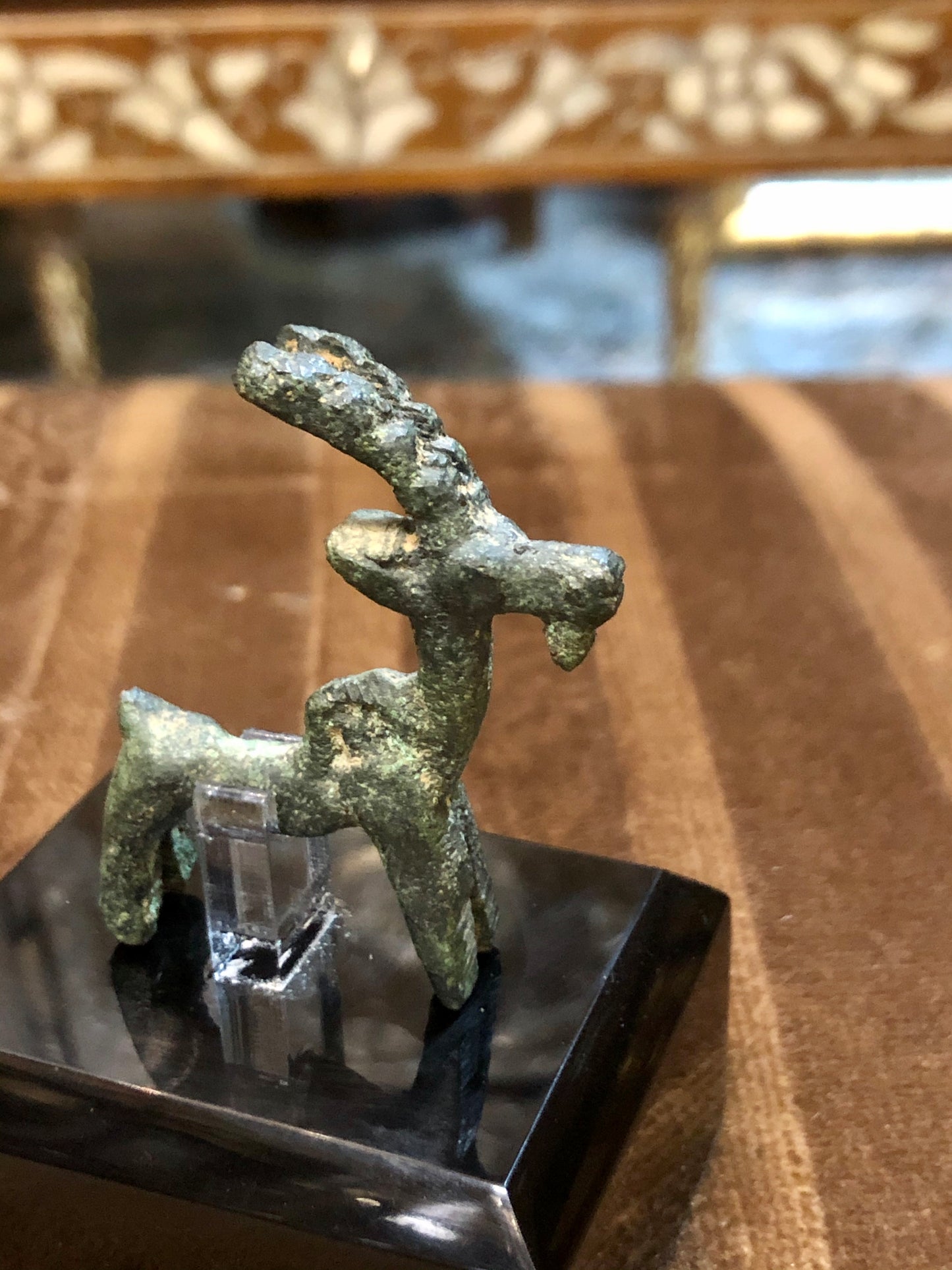hamedian gallery
A Roman Bronze Statue of a Deer. 63 B.C.E/ 330 C.E.
A Roman Bronze Statue of a Deer. 63 B.C.E/ 330 C.E.
Share
Couldn't load pickup availability
The ushabti was a funerary figurine used in ancient Egyptian Regions. Ushabtis were placed in tombs among the grave goods and were intended to act as servants or minions for the deceased, should they be called upon to do manual labor in the afterlife. The figurines frequently carried a hoe on their shoulder and a basket on their backs, implying they were intended to farm for the deceased. They were usually written on by the use of hieroglyphs typically found on the legs. They carried inscriptions asserting their readiness to answer the gods' summons to work.
The practice of using ushabtis originated in the Old Kingdom of Egypt (c. 2600 to 2100 BCE), with the use of life-sized reserve heads made from limestone, which were buried with the mummy. Most ushabtis were of minor size, and many produced in multiples – they sometimes covered the floor around a sarcophagus. Exceptional ushabtis are of larger size, or produced as a one-of-a-kind master work.
Due to the ushabti's commonness through all Egyptian time periods, and world museums' desire to represent ancient Egypt art objects, the ushabti is one of the most commonly represented objects in Egyptology displays. Produced in huge numbers, ushabtis, along with scarabs, are the most numerous of all ancient Egyptian antiquities to survive.
This Item comes with a certificate from The Israeli Antiquities Authority.




Why us?
"At Hamedian Gallery, our journey spans over 35 years of dedication to excellence in the world of antiquities. Through hard work, passion, and the support of our valued customers, we've achieved remarkable milestones that have shaped our reputation as a trusted source for rare and authentic treasures.
Our breakthroughs in the industry have been fueled by the countless friendships and partnerships we've cultivated along the way. These relationships have not only enriched our collection but have also allowed us to expand our offerings to include a diverse array of items, from Icons and pottery to ancient coins, statues, and carpets.
One of our proudest achievements came when the Israeli Antiquities Authority and The Ministry of Tourism granted us authorization to sell a wide range of antiquities, affirming our commitment to authenticity and integrity. This milestone opened doors to new opportunities, leading to partnerships with international companies and participation in prestigious auctions worldwide.
What sets us apart is our unwavering dedication to authenticity. Every item in our gallery is accompanied by a legal certificate from the Israeli Antiquities Authority, and our inventory is meticulously cataloged and classified by the Israeli Museum. This ensures that our customers can shop with confidence, knowing they are acquiring genuine pieces of history.
To our esteemed customers, we extend our heartfelt appreciation for your trust and support. Thank you for allowing us to share our passion for antiquities with you. We invite you to explore our gallery and discover the timeless treasures that await."




